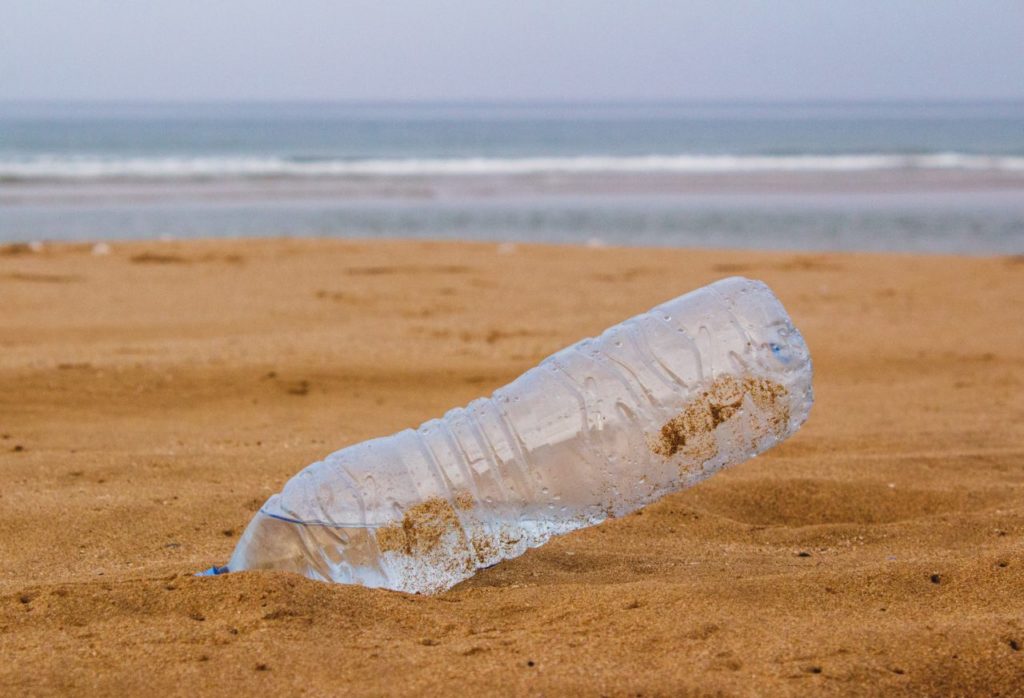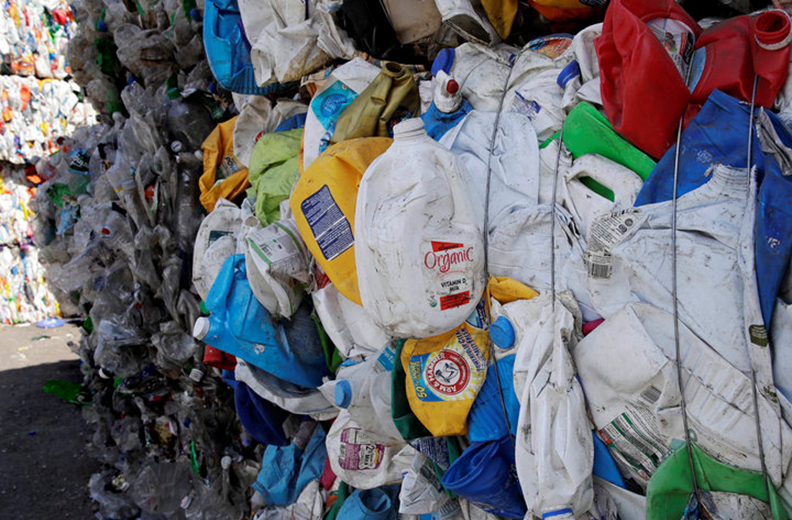
When Philipp Schwabl asked eight healthy people on four continents to take part in an experiment to see if plastic was present in their bodies, he had little idea what to expect.
The Medical University of Vienna researcher,
They were then asked to send a piece of their stool to an Austrian government laboratory where it was tested to identify barely visible microplastic particles, which are smaller than 5 millimeters long.
The study, published in August, confirmed for the first time that microplastics are deep inside humans. All eight volunteers were found to have particles of most of the nine most common classes of plastics, including polypropylene and PET. On average, Schwabl found 20 particles per 10 grams of stool.
“I did not think all the samples would be positive,” Schwabl said. “There is data on microplastics being present in shrimps, fish, oysters and mussels, but there was a question over whether they were present in humans. It is highly likely that during various steps of food processing or as a result of packaging, food is being contaminated with plastics.”
“The smallest particles are capable of entering the bloodstream, the lymphatic system and may even reach the liver,” he added. “We need further research to understand what this may mean for human health.”
A clutch of studies looking at large plastic fragments in oceans has recently shown the world’s most ubiquitous material to be present from the poles to the equator and to be a growing environmental hazard. Plastic in marine environments is now widely recognized to be a threat to many marine species.
The new awareness of plastic pollution is leading scientists to ask afresh how much the human body is being polluted.
Studies have found plastic fibers and fragments present throughout the food chain, in plankton and fish larvae, bottled and tap water, seafoods, honey and salt.
One analysis of 259 water bottles from 19 places in nine countries found an average of 325 plastic particles in every liter of water. One widely sold brand had concentrations of about 10,000 particles per liter, and only 17 of the 259 bottles contained water that was free of plastic.
 THE ASSOCIATED PRESS – Global plastic production has increased from 16.5 million tons a year in the 1960s to over 364 million tons a year now and is expected to triple by 2050.
THE ASSOCIATED PRESS – Global plastic production has increased from 16.5 million tons a year in the 1960s to over 364 million tons a year now and is expected to triple by 2050.
Other research has shown plastic particles shed from degrading car tires present in the air we breathe in the street, in homes from the washing of synthetic clothes, and in the soil via sludge from water treatment works that is used as a fertilizer.
With global plastic production increasing from 16.5million tons a year in the 1960s to over 364 million tons a year now and expected to triple by 2050, research is needed to gauge what effect growing human exposure to it may be having, say scientists.
“Plastic is non-degradable. It cannot be broken down and has the potential to persist in our bodies for a lifetime after exposure,” said Stephanie Wright, a researcher at University College London who specializes in microscopic plastic pollution.
People working in the textile industry have been shown to develop lung disease after exposure to nylon (plastic) flock, said Wright. “Continuous daily
Michael Warhurst, director of European chemical watchdog group CHEM Trust, has, with academics, identified over 4,000 chemicals potentially present in plastic packaging, of which 63 have been identified as dangerous to human health because of their potential to disrupt hormones.
 JAPATINOVIA GETTY IMAGES – One analysis of 259 water bottles from 19 places in nine countries found an average of 325 plastic particles in every liter of water.
JAPATINOVIA GETTY IMAGES – One analysis of 259 water bottles from 19 places in nine countries found an average of 325 plastic particles in every liter of water.
“Many chemicals used in plastics have not been tested for their endocrine-disrupting effects,” Warhurst said. “Current test methods are not very good at identifying all of them.”
Some of the most common are bisphenols and phthalates, used in everything from food packaging and toys to floor tiles and water bottles. They have been connected to childhood obesity, asthma, cardiovascular diseases and even cancers.
Many countries have either banned bisphenol A or advised that it may be dangerous to children. The United States’ National Toxicology Program has “some concern” for bisphenol A’s effect on the brain, behavior and prostate gland in fetuses, infants and children. It is still used widely in Europe.
But other bisphenols and phthalates are not banned and are used frequently in the production of consumer goods. Many, said Warhurst, may be similar or even more toxic than those banned.
“A lot of chemicals are very similar to known endocrine disruptors. When one gets banned, there are others behind it. Chemical companies are required to provide data but it’s not always comprehensive. There is no strict enforcement and companies can bring chemicals onto the market easily. More research is needed and much better control,” he said.
Other scientists have said the danger to human health, if any, may be in the smallest pieces, or nanoplastics. “Microplastics will not enter a cell, but nanoplastics are small enough to cross into cells and permeate the body,” said Anne Marie Mahon, a researcher at the Galway-Mayo Institute of Technology in Ireland. Her recent research found sludge in water treatment works full of microparticles.
“It’s possible that chemicals could be absorbed in our circulatory system or pass into our organs. But whether that is happening is unknown,” Mahon said.
In sufficient concentrations, chemicals can injure and kill cells in the human body, said Frank Kelly, chair of environmental health at King’s College London and one of Britain’s leading authorities on air pollution. He wrote with Stephanie Wright: “The cells may be replaced successfully or they may not. If inhaled or ingested, microplastics may accumulate and exert localized toxicity by inducing an immune response. ”
Their research is backed by Philipp Schwabl in Austria. “In animals, some microparticles have been found in the liver and embedded in tissue,” he said. “Depending on the amount, this could cause immune reactions. It’s possible that the minutest particles are in the human blood and tissue but it’s very hard to measure and we cannot prove it yet.”
“We urgently need more research,” he added.
This series is funded by SC Johnson. All content is editorially independent, with no influence or input from the company.
